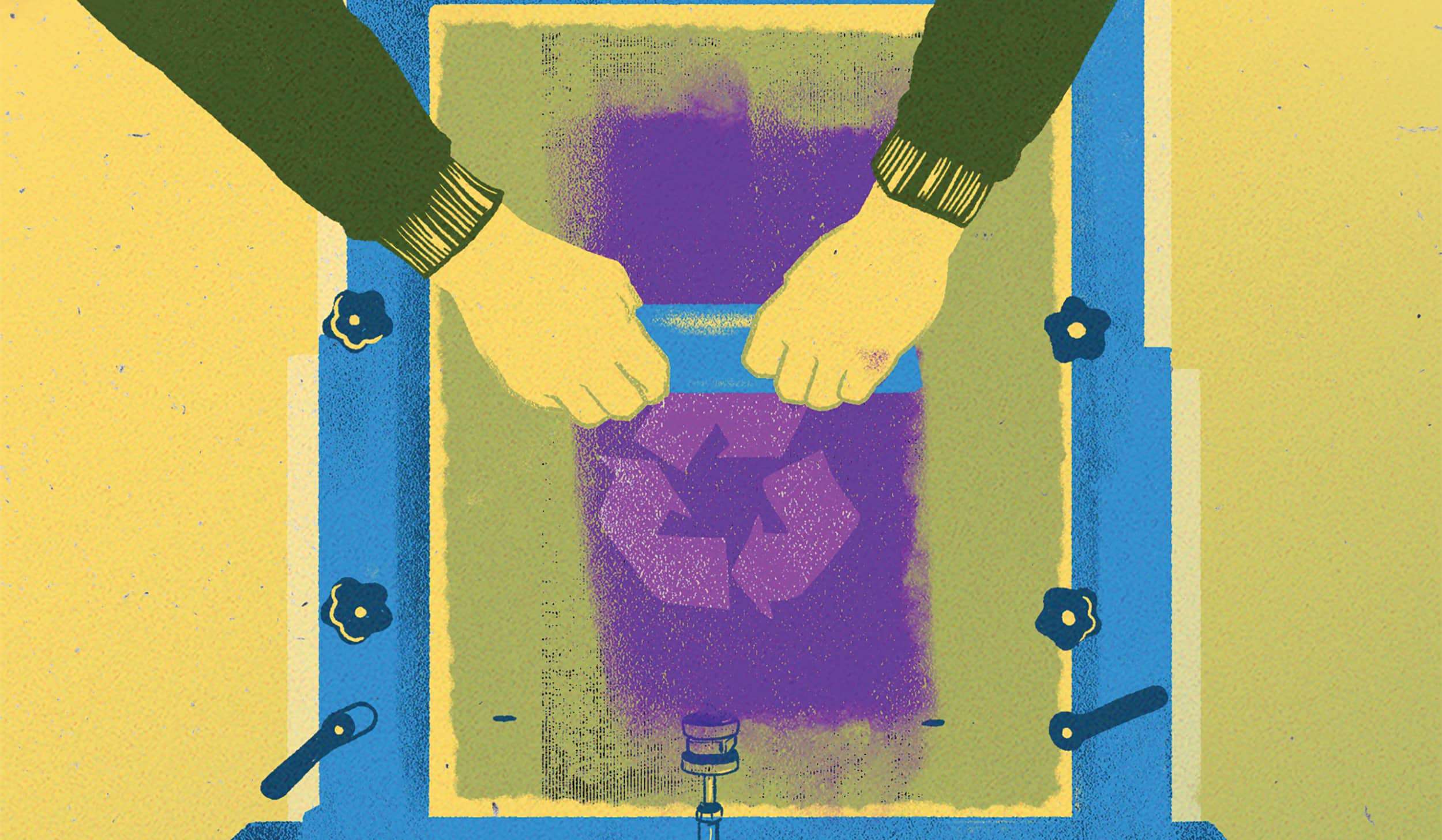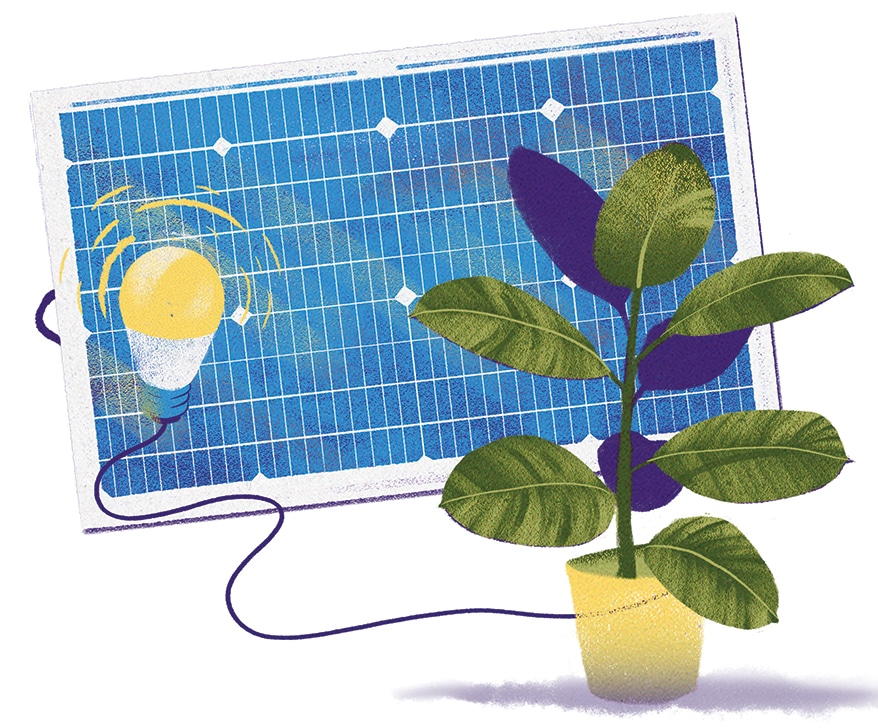
40 Sustainable Actions That Screen Printers Can Take Right Now
Reducing, reusing and recycling is cheaper and easier than most would think.
Published
1 year agoon
OVER THE PAST 10 years or so, the word “sustainable” has seen an emergence in the printing industry as an aspirational element. Many businesses are choosing a more sustainable garment, which feeds into customer demand.
However, simply using a recycled or organic apparel item falls short of making that product sustainable. There’s more to the story, and it involves how you decorate the shirt. You should consider three ideas when thinking about being more sustainable.
- Reduce — Can you reduce the amount of energy, consumables, labor, time, errors, or steps in your process?
- Reuse — What can you reuse in your process instead of buying new?
- Recycle — Can you give something a new purpose?
Here’s a list of 40 easy to complete, and most importantly, impactful ways you can develop a sustainability-minded process in your shop.
- Sign up for an energy audit for your company by your local utility. Chances are this is a free service. They can provide you with a comprehensive report on how you can reduce your energy consumption and tips on improvements.
- Investigate the sustainability differences between water-based and plastisol ink. Don’t be fooled into thinking water-based ink is sustainable just because it has “water” in the name. Look at the ink’s ingredients, the energy needed to cure, and the level of wasted ink used when printing or cleaning up.
- Develop a robust preventative maintenance program for not only your equipment but your HVAC, air compressors, air conditioning, forklifts, and other overlooked items in your shop. Change your air filters often. If you are using older units, consider the benefits of replacing them with newer, energy-efficient models.
- Watch the use of dorm-sized refrigerators in your shop. Make sure all appliances are Energy Star rated.
- For office copy paper, use only 100-percent post-consumer recycled fiber paper, which is also chlorine free.
- Check before purchasing any new office furniture that a used source isn’t available.
- All office, break room, bathroom, or kitchen supplies are verified to have at least 50 percent recycled content. This includes envelopes, Post-it Notes, and copy paper.
- Eliminate paper towels in the break rooms and bathrooms by installing an air-blade. Air-blades are extremely energy efficient, can operate without touching the equipment, and don’t produce any solid waste like using a paper towel can.
- Microwaves, coffee makers, and other small appliances are unplugged at night or are programmed to shut off via a timer.
- Transition to using motion and noise sensor light switches in all public spaces within your company. This includes meeting rooms, break rooms, storage areas, and bathrooms.
- Move thermostats to public areas, set them, and lock them so only key personnel can adjust them. Set temperatures and fan speed to appropriate levels during the cooling and heating seasons.
Consider getting a Sustainable Green Printing Partnership Certification. It’s the only sustainability certification that’s built for the printing industry.
- Install an awning system to help control your energy consumption. Studies have shown installing an awning on the south-facing window can reduce solar heat gain by 65 percent; for a west-facing window, it’s a 77-percent reduction.
- Inspect your windows. Installing blinds can help save energy. Vertical or horizontal works, but these are more effective at preventing summer heat gain than winter heat loss. Inspect and caulk all windows as needed. Put this on your yearly checklist. Inefficient windows can be responsible for 50 percent of energy loss.
- If you have more than one large production machine, stagger their start-up times to 15-minute intervals to avoid a daily energy spike. This won’t save any more electricity than just starting them all at once; it will reduce your overall energy costs and keep your usage to more stable levels.
- Be receptive to new ideas. Have a suggestion box or an open forum where staff members can contribute their ideas.
- Use online tools such as Skype, GoToMeeting, Zoom, or other services to avoid business travel to complete your client conferencing.
- Use bioremediation technology for cleaning plastisol ink on squeegees, floodbars, and other stuff around the shop. This is a fantastic alternative to traditional cleaners and reduces your shop’s VOCs.

- Install solar panels for your building. There are some tax benefits and other savings.
- Consider painting your metal building roof with a reflective white coating to reduce the solar heat gain.
- Consider having more office plants around. Not only do they look great, but some have some valuable characteristics: Rubber and corn plants are well known for removing indoor air pollutants; English Ivy is not only easy to grow, but it helps eliminate mold.
- Have your company participate in an annual community environmental clean-up. Whether it’s picking up trash on the side of the road, repurposing an area, or helping with a local nature park, this could be a fun and productive event for your company. Have your staff take suggestions and vote on what needs to be accomplished in your area. Don’t forget to document and publicize your efforts!
- Keep track of your errors. Use a spreadsheet and determine the root cause of the problem. This is not just in print production, but with purchasing, screen room, receiving, or other departments. Doing things right is always sustainable.
- Promote environmental and sustainability awareness by promoting the program in your company’s new hire packet during training with new staff members.
- Recycle more than just soda cans and water bottles. Have areas or containers for hydraulic fluid, batteries, computers, cell phones, packaging, metal, paper, cardboard, light bulbs, and any other recyclable material that you can remove from the waste stream.
- Reuse misprinted garments as registration blanks and turn them into shop rags for cleanup.
- Use professional measuring tools such as a tension meter, donut probe, and EOM calculator to determine if your printing processes are dialed in correctly.
- Learn how to print an underbase screen with only one stroke. This is a combination of screen tension, EOM, off-contact, and squeegee sharpness and mechanics. This saves time, reduces ink consumption, and lowers flash dwell times.

- Try to reuse boxes, paper, packing materials, and any other items if you can. Have an area where these are kept. Keep it clean and neat.
- Conduct a “dumpster audit.” Try to eliminate as much material going into the dumpster by preventing the waste or recycling the material. Set a goal to reduce the dumpster pick-ups by half.
- Do the work and have your shop go paperless.
- Switch to using environmentally preferable cleaning supplies, dishwashing soap, and other products.
- Plant a “Victory Garden” in front or on the side of your building. Grow vegetables and fruit you can serve during the year.
- At least once a month, have staff members “donate” reusable office supplies back to the office supply closet. The list of supplies includes everything that accumulates during the typical workday: folders, paper clips, pens, highlighters, binders, etc. This reduces the need to purchase new.
- Position recycling station bins throughout your company in key areas. Near the mail station, copier/fax, breakroom, and workstations.
- Before buying anything, ask, “Do we really need this?” Maybe a better process, technique, or method can be employed instead of purchasing something.
- Use a pest control company that utilizes eco-conscious and safe chemicals.
- Calculate your company’s carbon footprint. You can buy carbon offsets for your business.
- Review how you’re using water in your shop. Test the effluent to ensure problematic chemicals are not going down the drain.
- Work with like-minded businesses and people. Often, you can share ideas and tips on what’s working or how to do something. Find local businesses or companies in your supply chain. Start a group!
- Look into buying Renewable Energy Credits (RECs) from your local utility company. There are more than 850 utility companies in the US that offer this.
Bonus! Consider getting a Sustainable Green Printing Partnership Certification. It’s the only sustainability certification that’s built for the printing industry.
Rome wasn’t built in a day, and neither will your sustainability efforts. Get started by organizing a committee and take things one step at a time. Knock out a few easy-to-manage tasks and build momentum. Be sure to keep track of what you’re doing and communicate this to your entire staff.
You can do this!
Want more from The Marshall Plan? Read all of Marshall Atkinson’s columns at here.
Marshall Atkinson is the owner of Atkinson Consulting, LLC, based in Mesa, Arizona. He coaches apparel decoration companies on operational efficiency, continuous improvement, workflow strategy, business planning, employee motivation, management, and sustainability. He is a frequent tradeshow speaker, author, and host of two podcasts, as well as co-founder of the Shirt Lab educational company. He can be reached at marshall@marshallatkinson.com

SPONSORED VIDEO
Let’s Talk About It
Creating a More Diverse and Inclusive Screen Printing Industry
LET’S TALK About It: Part 3 discusses how four screen printers have employed people with disabilities, why you should consider doing the same, the resources that are available, and more. Watch the live webinar, held August 16, moderated by Adrienne Palmer, editor-in-chief, Screen Printing magazine, with panelists Ali Banholzer, Amber Massey, Ryan Moor, and Jed Seifert. The multi-part series is hosted exclusively by ROQ.US and U.N.I.T.E Together. Let’s Talk About It: Part 1 focused on Black, female screen printers and can be watched here; Part 2 focused on the LGBTQ+ community and can be watched here.
You may like
Advertisement

The Profit Impact of a Market Dominating Position

Inkcups Announces New CEO and Leadership Restructure

Hope Harbor to Receive Donation from BlueCotton’s 2024 Mary Ruth King Award Recipient
Advertisement
Subscribe

Bulletins
Get the most important news and business ideas from Screen Printing magazine's news bulletin.
Advertisement
Most Popular
-

 Case Studies2 months ago
Case Studies2 months agoHigh-Density Inks Help Specialty Printing Take Center Stage
-

 Art, Ad, or Alchemy2 months ago
Art, Ad, or Alchemy2 months agoF&I Printing Is Everywhere!
-

 Andy MacDougall2 months ago
Andy MacDougall2 months agoFunctional and Industrial Printing is EVERYWHERE!
-

 Columns3 weeks ago
Columns3 weeks ago8 Marketing Mistakes Not to Make When Promoting Your Screen Printing Services Online
-

 Editor's Note3 weeks ago
Editor's Note3 weeks agoLivin’ the High Life
-

 Marshall Atkinson3 weeks ago
Marshall Atkinson3 weeks agoHow to Create a Winning Culture in Your Screen-Printing Business
-

 Thomas Trimingham2 months ago
Thomas Trimingham2 months ago“Magic” Marketing for Screen Printing Shops
-

 News & Trends2 months ago
News & Trends2 months agoWhat Are ZALPHAS and How Can You Serve Them in Your Print Business?










